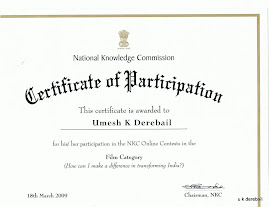
History : From the Neolithic mankind the baton was handed over to the Nandas who ruled over this territory, and later the Mauryas took over the reign after defeating the Nandas. Chandragupta Maurya ascended the throne in 323 B.C and spread his wings right upto Shravanbelagola. Later the Guptas and Satvahana dynasties ruled this region. South Indian dynasties of Pallavas and Cholas too reigned for some time, before Hoysalas and Vijaynagar kings took over. The contribution of Raja Raja Chola was limited to the main temple, one of the Gopuram was constructed by the Hoysala Kings, the credit to complete renovation of the temple should go to Bukkaraya in 1345 AD. The addition in the form of Pushkarni was installed by Krishnadevaraya around 1515 AD. After the fall of Vijaynagar empire, the Palegars took over the territory. Than the Bahmani Sultans took over and a Nawab was installed as the governor of the territory. Ultimately the territory passed on to the Nizams of Hyderabad under the British East India company.
Location : Yaganti can be reached through Gooty from Hyderabad towards Banagapalli. It can be approached through Kurnool also. The other route is via Srisailam, Mahanandi, Nandyal and Banagapalli. The third route from Bangalore is to travel via Anantpur, Tadpatri, Belum Caves, Banagapalli and Yaganti. The approach road is from Gooty to Yaganti. The approx distance from Bangalore is 270 kms and Hyderabad it is 340 Kms on NH 7. Yaganti is located exactly 17 kms from Banagapalli if one approaches from Ananthpur or Srisailam route.

Yaganti Kshetra falls under the jurisdiction of Kurnool district. Yagantiswamy is popular for its Shiva temple. A lingam adornes the main shrine. Some claim it was built according to the Vaishnav tradition. Umamaheswar, Parvathi and Nandi are the main deities in the temple. There is a pushkarni for devotees to take bath. It is better to avoid using soap while taking bath. The water is crystal clear and pure because of its flowing nature. Nobody is aware how the pond is blessed with plenty of water even during the summer. Generally the devotees have their bath before proceeding for dharshan.
Shivaratri is celeberated with grandeur and fervour. Devotees from all over AP visit the temple during Shivaratri festivity, which generally held in Feb or March every year. According to a myth sage agastya visited this kshetra and took bath and paid his respect to Lord Shiva. The Nandi seems to be growing in size every year by few mm. It is predicted when the Kaliyug ends Nandi will signify the end of evil domination in this world.
There are 3 cave temples across the spring located on the hillock. The Augustya Muni Cave is quite a steep 120 steps climb. One can find a Devi statue installed which is regularly worshipped. It is real adventure ascent on to the cave temple. The panaromic view of the entire Yaganti temple complex is stupendous from the vantage point on the cave. The steps are safe, one has to be little cautious during the rainy season. Aged people need support particularly when is nearing the peak. There is a resting point in the middle of the cave.

The second cave temple has a lingam and priest is busy helping the devotees with blessing and sermon if required. This cave temple is less steep than the first one. One has to be cautious with elders and children while reaching the top of the cave precincts.
Third cave is an ideal Neolithic mankind dwelling spot, it is accessible through a narrow modified door way. The cave is low level hardly 4 feet in height. It can be claustrophobic for some individuals, the ventilation is provided at the end of the cave. It is better to carry a torch or powerful light. There are lingam to be worshiped along with statue of Shiva.
A huge temple complex adjescent to the main temple complex is under renovation. This temple is quite huge and would be majestic to visit once the renovation is complete. A temple trust has 4 rooms for those who would like to experience Yaganti through the night. The next alternative for stay would be ideally at Kurnool. Gooty and Banagapalli has limited accommodation. Nandayal towards Prakasham district and Tadapatri are other alternative spots for stay.
Overall a visit to Yaganti is a refreshing religious and trekking experience, if one is adventurous one can visit the deserted Nawabs Palace enroute, Fort @ Banagapalli, Mosque within the complex and check out. If one needs further trekking check out the Gooty Fort and Kurnool Fort. Say Yes to Yaganti next time


No comments:
Post a Comment